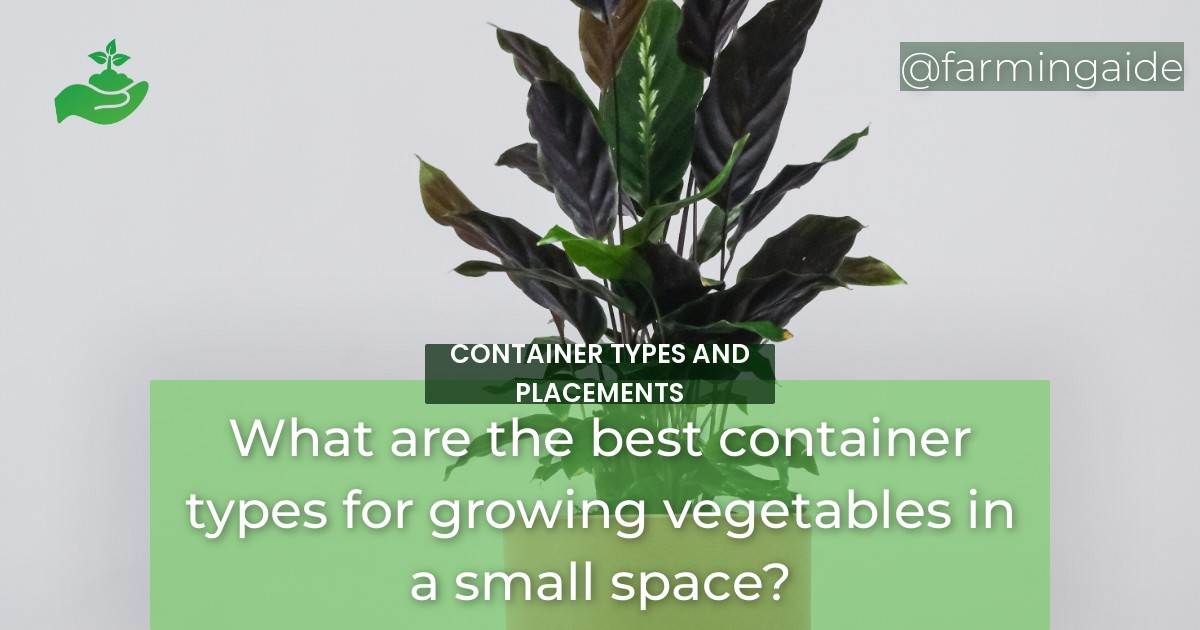
Container Types and Placements: Best Container Types for Growing Vegetables in a Small Space
Growing vegetables in containers has become increasingly popular among urban gardeners and those with limited outdoor space. Container gardening allows you to grow fresh produce right at home, using a variety of containers and placements that suit your needs. In this article, we will explore the best container types for growing vegetables in a small space.
Benefits of Growing Vegetables in Containers
Before we dive into the best container types for small-space vegetable gardening, let’s take a look at the benefits of growing vegetables in containers:
Space Efficiency: Containers take up less space than traditional garden beds, making them an ideal choice for small patios, balconies, or even indoor spaces.
Control over Soil and Nutrients: With container gardening, you have complete control over the soil and nutrients your plants receive, allowing you to optimize their growth and health.
Easy Maintenance and Harvesting: Container gardening is easy to maintain and harvest since you can easily move the containers around and tend to your plants without bending or squatting.
Factors to Consider When Choosing Container Types
When choosing container types for your small-space vegetable garden, there are a few factors to consider:
Size of Container: The size of your container will depend on the type of vegetable you are growing. Generally, larger vegetables will require larger containers.
Material of Container: The material of your container will affect its durability, weight, and moisture retention. Common materials include plastic, fabric, metal, and wood.
Drainage and Aeration: Good drainage and aeration are crucial for healthy plant growth. Make sure your container has proper drainage holes and is not completely sealed.
Mobility: Consider how and where you will be moving your containers. Some containers may be too heavy to move once they are filled with soil and plants.
Best Container Types for Small-Space Vegetable Gardening
Now that we’ve covered the factors to consider when choosing container types, let’s take a look at the best containers for small-space vegetable gardening:
Plastic Pots: Lightweight and affordable, plastic pots are a popular choice for container gardening. They come in a variety of sizes and colors and are easy to move around.
Fabric Grow Bags: Fabric grow bags are a newer option that is becoming increasingly popular. They are lightweight, reusable, and promote healthy root growth.
Raised Garden Beds: Raised garden beds are perfect for small outdoor spaces such as patios or balconies. They can be made from wood, metal, or plastic and provide ample space for multiple plants.
Hanging Baskets: Hanging baskets are a great way to grow plants vertically, saving space and adding visual interest to your garden. They are ideal for vining vegetables such as tomatoes and cucumbers.
Window Boxes: Window boxes are another vertical container option that works well for small spaces. They are ideal for herbs and smaller vegetables such as lettuce and kale.
Where to Place Containers for Optimal Growth
Once you have chosen your container types, it’s important to place them in the right location for optimal growth:
Sunlight Requirements: Most vegetables require at least six hours of direct sunlight per day. Choose a location that receives adequate sunlight for your chosen plants.
Protection from Elements: Make sure your containers are protected from wind, rain, and extreme temperatures. Move them indoors or to a more sheltered location if necessary.
Accessibility for Maintenance and Harvesting: Make sure your containers are easily accessible for watering, pruning, and harvesting. Consider using a rolling plant stand or placing your containers on a raised platform for easier access.
Conclusion
In conclusion, container gardening is a great way to grow fresh vegetables in a small space. By choosing the right container types and placements, you can optimize your plant growth and enjoy fresh produce right at home. Remember to consider the size, material, drainage, and mobility of your containers, and place them in a location that receives adequate sunlight and protection from the elements. Happy gardening!

